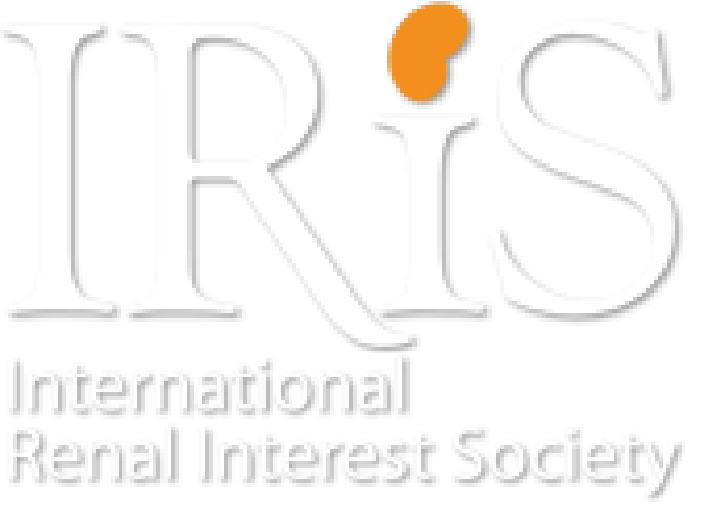
About IRIS
The IRIS Board made three significant changes to CKD Guidelines during 2014 and 2015. A summary of these new recommendations is presented here. The full version of 2015 Guidelines will be uploaded during our website relaunch by the end of 2015.
Substaging by Arterial Blood Pressure
We recommend replacement of the existing abbreviations for blood pressure substages (AP0-AP1) with descriptive terms as follows:
| Systolic blood pressure (mm Hg) | Diastolic blood pressure (mm Hg) | Risk of future target organ damage | BP substage | |
|---|---|---|---|---|
| Original | New | |||
| <150 | <95 | Minimal | AP0 | Normotension |
| 150 - 159 | 95 - 99 | Mild | AP1 | Borderline hypertension |
| 160 - 179 | 100 - 119 | Moderate | AP2 | Hypertension |
| >180 | >120 | Severe | AP3 | Severe hypertension |
Treatment of Proteinuria
We recommend that IRIS CKD Stage 1 patients with persistent proteinuria (UPC ≥ 0.5 for dogs or 0.4 for cats) are not only monitored and thoroughly investigated but also receive standard treatment for proteinuria as currently recommended for IRIS CKD Stages 2 to 4. This parallels the IRIS consensus statement on standard treatment for glomerulonephritis (J Vet Intern Med 2013;27:S27–S43).
Interpreting Blood Concentrations of Symmetric Dimethylarginine (SDMA) in CKD
SDMA concentrations in blood (plasma or serum) may be a more sensitive biomarker of renal function than blood creatinine concentrations. A persistent increase in SDMA above 14 µg/dl suggests reduced renal function and may be a reason to consider a dog or cat with creatinine values <1.4 or <1.6 mg/dl, respectively, as IRIS CKD Stage 1.
In IRIS CKD Stage 2 patients with low body condition scores, SDMA ≥25 µg/dl may indicate the degree of renal dysfunction has been underestimated. Consider treatment recommendations listed under IRIS CKD Stage 3 for this patient.
In IRIS CKD Stage 3 patients with low body condition scores, SDMA ≥45 µg/dl may indicate the degree of renal dysfunction has been underestimated. Consider treatment recommendations listed under IRIS CKD Stage 4 for this patient.
These comments are preliminary and based on early data from the use of SDMA in veterinary patients. We expect them to be updated as the veterinary profession gains further experience using SDMA alongside creatinine, the long-established marker in diagnosis and monitoring of canine and feline CKD.
IRIS Newsletter 2015
IRIS annual Board Meeting 2015
The 2015 IRIS Board Meeting in Indianapolis on June 1 and 2 was attended by 12 Boardmembers and two representatives of Elanco Animal Health, who are continuing Novartis Animal Health's role as principal sponsor of the IRIS Board.

Attendees at the 2015 IRIS Board Meeting: (from left to right) Ed Whittle (Elanco), Pepa Fernandez del Palacio, Claudio Brovida, Jonathan Elliott, Astrid van Dongen, Greg Grauer, Xavi Roura, David Watson, Alexander Hűttig, David Polzin, Hervé Lefebvre, Reidun Heiene, Larry Cowgill, and Paul Ghyoot (Elanco). Boardmembers absent were Scott Brown, Jean-Louis Pouchelon and Toshifumi Watanabe.
Two New IRIS Initiatives
IRIS Napa Meetings
At its 2014 meeting, the IRIS Board approved the concept of “IRIS Napa Meetings” to further advance the discipline of veterinary nephrology. These meetings will be forums involving a panel of the profession’s recognized leaders focusing on enhanced problem recognition and innovative solutions to topical, complex issues affecting kidney health in dogs and cats. The inaugural meeting in the Napa Valley, California in May 2015 focused on recognition of early (subclinical) kidney  disease and its role in progressive kidney injury. The 2015 Napa Panel comprised Drs David Polzin and Larry Cowgill (co-chairs), and Astrid van Dongen, Greg Grauer, Jonathan Elliott, Scott Brown, Cathy Langston, Gilad Segev and Mary Nabity. IRIS gratefully acknowledges IDEXX for generous organizational and financial support for the meeting, under the direction and support of Dr. Roberta Relford.
disease and its role in progressive kidney injury. The 2015 Napa Panel comprised Drs David Polzin and Larry Cowgill (co-chairs), and Astrid van Dongen, Greg Grauer, Jonathan Elliott, Scott Brown, Cathy Langston, Gilad Segev and Mary Nabity. IRIS gratefully acknowledges IDEXX for generous organizational and financial support for the meeting, under the direction and support of Dr. Roberta Relford.
The 2015 IRIS Napa Meeting considered the potential of novel renal biomarkers to permit earlier recognition of chronic kidney disease (CKD) and acute kidney injury and their potentially interrelated pathogeneses. Based on preliminary evidence with various biomarkers, an hypothesis emerged that progression of CKD may be perpetuated, at least in part, by “active” and ongoing and/or episodic kidney injury that remains undetected until structural losses of nephron mass is reflected in traditional “static” diagnostic markers of kidney function. If validated by future studies, this hypothesis could have an important influence on the future diagnosis and management of early kidney disease.
Future IRIS Napa Meetings will be planned as important issues arise and critical needs are identified to generate innovative strategies in veterinary nephrology. IRIS believes these focused discussions will lead to earlier solutions to fundamental problems in nephrology and enable veterinarians to stay at the forefront of new medical breakthroughs. Organizations or commercial entities with an interest in veterinary nephrology are invited to consider supporting future IRIS Napa Meetings.
IRIS Renal Week, March 16-19 2016
The Advanced Kidney Therapies Symposium, also known as “Renal Week”, has been organized and hosted at the AMC in New York City for the past decade. With the relocation of Dr Cathy Langston, the originator and long-term organizer of Renal Week, from the AMC to The Ohio State University, the fate of this popular and respected kidney conference became uncertain. At its 2015 meeting, the IRIS Board agreed to become the new parent of Renal Week; this will add another important dimension to IRIS' educational activities. The 2016 IRIS Renal Week will be hosted at the UC Davis School of Veterinary Medicine, which provides an improved and more capable venue for delivery of state-of-the-art presentations and diverse laboratories.
Planning for the scientific program will continue under the direction of Drs Cathy Langston and Larry Cowgill, the original co-chairs, together with Drs Jonathan Elliott and David Polzin of the IRIS Board, and Dr JD Foster from the University of Pennsylvania. Organization of the meeting will be facilitated by Staff of the UC Davis Center for Continuing Professional Education, led by Dr Karl Jandrey and Kate Tweddale. The exciting educational content will be complemented by the camaraderie of fellow nephrologists, a sensory wine tasting class at the Mondovi Institute for Wine and Food Sciences, and California-style barbeques. UC Davis, located in the heart of northern California, will also provide opportunities for visits to the California Wine Country, San Francisco, Lake Tahoe, Yosemite, and the beautiful north coast of California. 
The preliminary program includes cardiorenal syndromes, mineral and bone metabolism in kidney disease, diagnostic biomarkers for acute and chronic kidney injury, conclusions and updates from the 2015 IRIS Napa Meeting, linkages between acute and chronic kidney disease, advances in extracorporeal therapies, and much more. The meeting will be preceded by a 2-day program on extracorporeal therapies for the beginner, and followed by a wet lab on interventional nephrology/urology. The new venue provides opportunities for expanded laboratories demonstrating intermittent and continuous dialysis procedures, therapeutic apheresis, hands-on instruction on urinary ultrasound and kidney biopsy techniques, and evaluation of diagnostic kidney biopsies. See http://www.vetmed.ucdavis.edu/ce/symposia_and_events/specialists/iris_renal_week_2016.cfm for the latest details, housing information, and updated program.
IRIS Website
The IRIS website has been under reconstruction during the transition of website management away from Novartis Animal Health, thus delaying regular updating. However, during 2014 and 2015 the Board made three important changes to IRIS CKD Guidelines; these have now been incorporated into the 2015 Guidelines now uploaded, and are summarized here.
Substaging by Arterial Blood Pressure
The Board recommends replacement of the existing abbreviations for blood pressure substages (AP0-AP3) with descriptive terms as follows:
| Systolic blood pressure (mm Hg) | Diastolic blood pressure (mm Hg) | Risk of future target organ damage | BP substage | |
|---|---|---|---|---|
| Original | New | |||
| <150 | <95 | Minimal | AP0 | Normotensive |
| 150 - 159 | 95 - 99 | Mild | AP1 | Borderline hypertensive |
| 160 - 179 | 100 - 119 | Moderate | AP2 | Hypertensive |
| ≥180 | ≥120 | Severe | AP3 | Severely hypertensive |
Note: systolic blood pressures are used for IRIS CKD substaging (the diastolic values here are only informative)
Treatment of Proteinuria
We recommend that IRIS CKD Stage 1 patients with persistent proteinuria (UPC ≥0.5 for dogs or 0.4 for cats) are not only monitored and thoroughly investigated but also receive standard treatment for proteinuria as previously recommended for IRIS CKD Stages 2 to 4. This parallels the IRIS consensus statement on standard treatment for glomerulonephritis (J Vet Intern Med 2013;27:S27–S43).
Interpreting Blood Concentrations of Symmetric Dimethylarginine (SDMA) in CKD
SDMA concentrations in blood (plasma or serum) may be a more sensitive biomarker of renal function than blood creatinine concentrations. A persistent increase in SDMA above 14 µg/dl suggests reduced renal function and may be a reason to consider a dog or cat with creatinine values <1.4 or <1.6 mg/dl, respectively, as IRIS CKD Stage 1.
In IRIS CKD Stage 2 patients with low body condition scores, SDMA ≥25 µg/dl may indicate the degree of renal dysfunction has been underestimated. Consider treatment recommendations listed under IRIS CKD Stage 3 for this patient.
In IRIS CKD Stage 3 patients with low body condition scores, SDMA ≥45 µg/dl may indicate the degree of renal dysfunction has been underestimated. Consider treatment recommendations listed under IRIS CKD Stage 4 for this patient.
These comments are preliminary and based on early data from the use of SDMA in veterinary patients. We expect them to be updated as the veterinary profession gains further experience using SDMA alongside creatinine, the long-established marker in diagnosis and monitoring of canine and feline CKD.
Other Website Changes
Several revised Educational topics are now posted (“Interpreting blood creatinine concentrations in dogs” and “Using urine specific gravity”) and there is a new article (“GFR in practice: assessment of glomerular filtration rate in dogs”) that presents two validated methods to consider if GFR assessment is deemed necessary in a canine patient.
Our new section, Emerging Themes, aims to present occasional articles on subjects currently being discussed in veterinary medicine but for which the future significance is still being investigated. The first two articles included here are “FGF-23: a new player in the regulation of phosphate” by Jonathan Elliott, and “Symmetric dimethylarginine (SDMA): new biomarker of renal function in cats and dogs” by Scott Brown.
The 2015 IRIS Award
The 2015 IRIS Award (value 10,000 euros) is granted to a promising individual for outstanding contributions to the field of veterinary nephrology. The Award will be presented at the 2016 ECVIM-CA Congress in Gothenburg, Sweden. For further details, contact the Chair of the IRIS Awards Committee(heiene.reidun@gmail.com).
Next IRIS Board Meeting
The 2016 IRIS Board Meeting is scheduled to take place in September 2016, just before the European College of Veterinary Internal Medicine Congress, at Gothenborg in Sweden.
Acknowledgement of Support from Elanco Animal Health
The IRIS Board thanks Elanco Animal Health and its representatives for continuing to support IRIS through provision of an annual grant and we look forward to working with Elanco Animal Health in the future. The ongoing expansion of our activities, through events such as the Napa Valley Meetings and Renal Week, underlines the enthusiasm of the IRIS group and confirms our commitment to providing continuing education for veterinarians active in veterinary nephrology around the world.